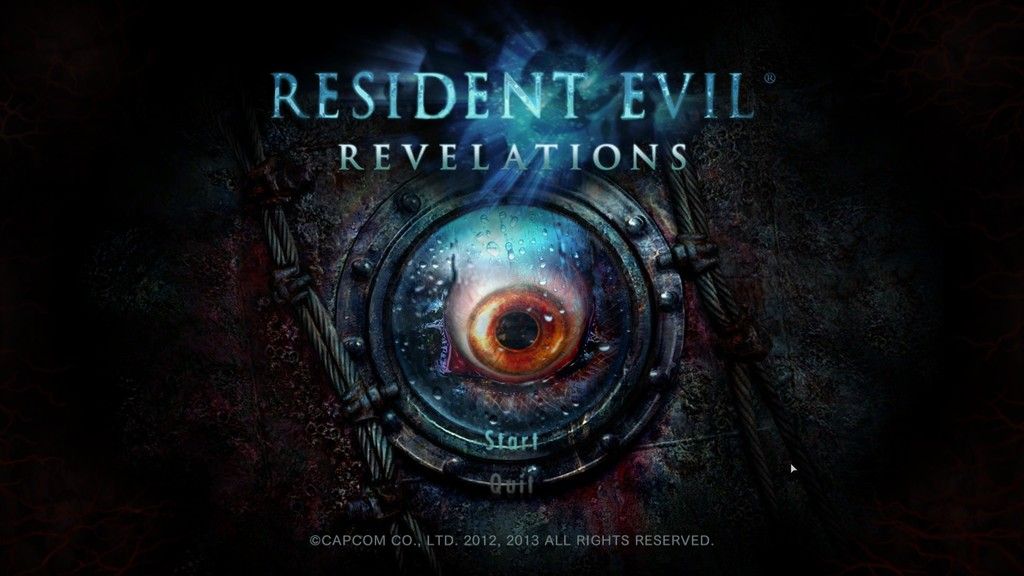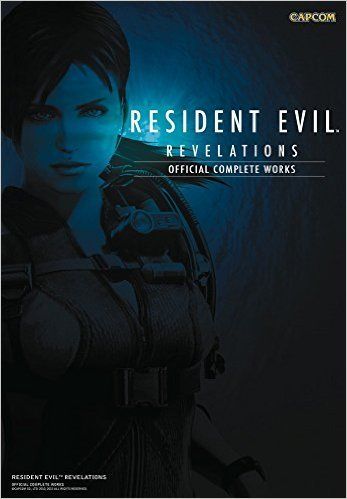Book provided by the publisher
You’ve got to feel sorry for the artists and designers that put untold hours into their craft for horror games. Especially those that design the enemies, and especially those that design the enemies in Resident Evil games. Why? Because when a monster appears in such a game, the average reaction is not “Why, I must admire the carefully designed model of this creature in detail before engaging it”, but rather a) “I’m going to try to take this thing down – from a distance – very quickly”, or b) “Oh crap, I’ve only got three bullets, I’m getting the hell out of here right now”.
The latest book attempting to redress the cosmic balance in this respect is Resident Evil Revelations: Official Complete Works from Titan Books.
Originally published in Japan about two years ago (and only available in English as of last week), this book only covers the first Revelations title; albeit both 3DS and big-screen versions. It’s fair to say though that if you have even a slight interest in this book, you won’t be disappointed. As well as images of humans, monsters, weapons, and locations from the game, it has a little bonus material and – significantly – annotations throughout from the original design staff, including Takashi Yoshikawa (lead character designer), Satoshi Takamatsu (art director), and Tomoko Takahashi (background concept artist/after-effects).
For some the commentary will be the highlight of the book, above even the art itself. At a few points, it hints at the fights that take place across the industry every day between artists and marketing teams (with the latter tending to win, of course). Most of the information and observations are specific to the game and/or series, of course; such as the fact that Takamatsu was aware of some people initially considering Parker’s design to be “a fat version of Chris”, but the overall negative reaction from some quarters to the fact that he looked realistically middle-aged being exactly what he’d hoped for.

Why use this as the cover art? Read the book to find out!
The commentary also offers a peek into the thought process behind the design and colour schemes of humans, monsters, and environments alike. For example, you may be aware that a few of the costumes in play for the female characters aren’t very… erm… practical. Whether or not they’re justified is for you to decide, but this book does at least give you some answers regarding how and why those designs made it into the final game. You’ll also see that it could have been worse. When you see the bonus costumes for Jill that were rejected… sheesh.
Indeed, as you might expect, there are a handful of tantalising glimpses at what might have been. There are a few concept sketches of unused human characters and, more interestingly, mutated enemies. The ditched enemies generally actually look like they had a lot of potential, and it’s a shame that they were dumped – apart from a hilarious looking lobster-man that, incredibly, one of the designers still thinks was a brilliant idea.
In general terms, this should go without saying but we’ll say it anyway; don’t look through this book if you’ve yet to play through Resident Evil Revelations, and wish to do so without spoilers. Characters, enemies, locations, and even a few major plot points are splattered across the pages here. You have been warned. Speaking of pages, the ones in use here are glossy and of high-quality paper, doing a lovely job of putting the art on display. It’s not a hardback, but does give you a slipcover so you can sort of pretend that it is.

Believe it or not, this costume came close to being even more camp.
The previously mentioned bonus material includes details of tie-in and promotional items (often Japanese-exclusive) for die-hard followers of ‘Resi’ to frantically scour eBay for. Also – and this will be appreciated by many – all of the files and documents to be found throughout the game are handily bunched together and typed out over four hassle-free pages at the back. You even get a look at a few of the cutscene storyboards.
One criticism that we didn’t expect to have, is that this book really could have done with some stricter proofreading. There are several incidents of bad grammar or typos (such as “This game’s secret ingredient are”), which we can only presume are hangovers from the initial translation that managed to slip through a final editor’s check. Half a dozen or so such mistakes in almost 200 pages isn’t exactly fatal though, and certainly failed to dampen our enjoyment of the book as a whole. This will certainly be best appreciated by a fan who’s completed the game, and is a perfect gift for any Resident Evil fanatic; but, although Revelations isn’t the iconic entry in the series that (for example) 2 and 4 are, there’s also enough in here to please somebody with only a mild interest in Resident Evil but a passionate interest in videogame visual design.








Comments